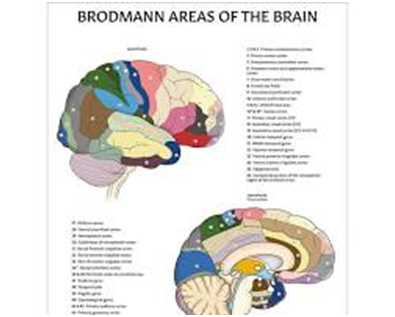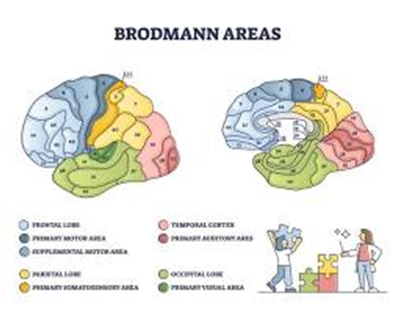#cerebralmapping
Explore tagged Tumblr posts
Text
Brodmann's areas: a cytoarchitectonic map
Brodmann's areas are another essential piece in the jigsaw of our understanding of the brain.
Let's imagine the brain as a geographical map. Instead of cities and mountains, there are different regions, each with its own characteristics. These regions are called Brodmann areas.
At the beginning of the 20th century, the German neuroanatomist Korbinian Brodmann spent many hours examining the cerebral cortex under a microscope. He observed that the different regions of the cortex did not have the same cellular organisation. Some areas were rich in large neurons, others in smaller ones, and so on.
On the basis of these cytoarchitectonic differences (i.e. linked to cellular architecture), Brodmann divided the cerebral cortex into 52 distinct areas, each bearing a number.

Why are Brodmann's areas important?
Brodmann's areas are not simple anatomical divisions. They correspond to functional regions of the brain. For example :
- Brodmann area 4 corresponds to the primary motor cortex, involved in controlling voluntary movements.
- Brodmann area 17 corresponds to the primary visual cortex, where visual information is first processed.
- Brodmann 44 is located in the frontal lobe and is involved in language production.

The relationship between Brodmann areas and Penfield's homonculus
You may notice a link between Brodmann's areas and Penfield's homonculus. The homonculus is a simplified graphic representation of the areas of the motor and sensory cortex. The different parts of the body are represented disproportionately according to their functional importance.
For example, the hand, which requires very precise motor control, occupies a large area on the motor homonculus. This area largely corresponds to Brodmann's area 4.
The limitations of Brodmann mapping
It is important to note that Brodmann mapping is a simplification. The reality is far more complex. Cerebral functions are not strictly localised in a specific area, but rather spread over networks of neurons that span several areas. What's more, the boundaries between the different areas are not always as clear-cut as you might think.
To sum up
Brodmann's areas offer an initial approach to understanding the functional organisation of the cerebral cortex. They help us to locate the different cerebral functions and to understand how the different brain regions interact with each other. However, we must not forget that the brain is a dynamic and complex organ, whose functions emerge from the interaction of millions of neurons.
To find out more:
- Cerebral plasticity: Connections between neurons can change throughout our lives, which means that Brodmann's areas are not fixed in time.
- Brain imaging techniques: Techniques such as functional MRI make it possible to observe brain activity in real time and pinpoint the functions of each Brodmann area.
Go further
1 note
·
View note
Text
Penfield's homonculus: a little man in your brain
Penfield's homonculus is a graphic representation of the somatotopic mapping of the cerebral cortex. In other words, it's a way of visualising how the different parts of our body are represented in the brain.

- Motor homonculus: This is the area of the cerebral cortex that controls voluntary movement. On the motor homonculus, the parts of the body that require fine motor skills (hands, lips) are represented disproportionately to those that require less (trunk).
- Sensory homonculus: This corresponds to the area of the cerebral cortex that receives sensory information from our body. Like the motor homonculus, the most sensitive parts of the body (hands, lips) occupy a larger surface area.
Why is this important?
Understanding the homonculus is essential in neurology, neurosurgery and functional rehabilitation. In particular, it allows us to :
- Locate brain lesions that cause motor or sensory disorders.
- Predict the consequences of brain surgery.
- Implement appropriate rehabilitation strategies.
Go further
0 notes